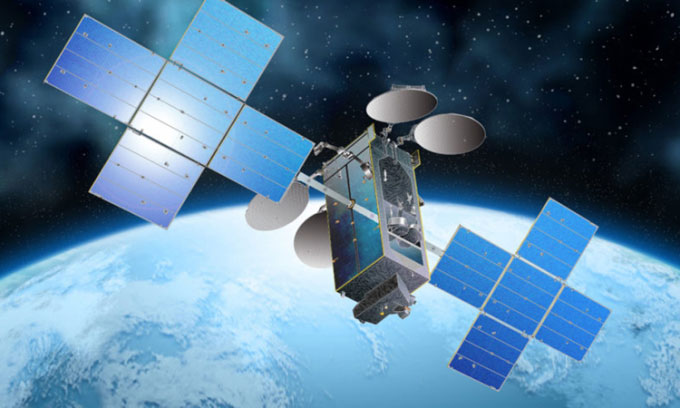SpaceX’s Falcon Heavy rocket is set to launch the heaviest commercial satellite in history into geostationary orbit at an altitude of 35,785 km.
SpaceX is scheduled to launch the heaviest commercial satellite in history into geostationary orbit using the Falcon Heavy rocket early next year, following several delays, Interesting Engineering reported on May 17.

Jupiter-3 will have a maximum bandwidth of 500 gigabits per second, covering North and South America, Canada, and Mexico. (Photo: Maxar Technologies)
In March, EchoStar announced that it had selected SpaceX to launch the Jupiter-3 communication satellite, manufactured by Maxar Technologies. According to this announcement, Jupiter-3 is scheduled for launch in Q4 2022.
However, in early May, EchoStar revealed that Maxar Technologies was delayed in completing the Jupiter-3 satellite. Consequently, the satellite will launch no earlier than early 2023. Maxar Technologies also announced that the Jupiter-3 satellite (also known as Echostar 24) is expected to weigh around 9.2 tons, significantly more than the previously estimated weight of 5.8 tons.
In July 2018, SpaceX set a record for launching the heaviest commercial geostationary satellite in history by sending the Telstar 19V satellite, weighing 7,076 tons, into geostationary transfer orbit (GTO). This record may soon be broken with Jupiter-3, which could be the heaviest payload ever launched into geostationary orbit at an altitude of 35,785 km above the Earth’s surface.
However, the Ariane 5 rocket from Arianespace still holds the record for the heaviest total cargo launched into GTO, with two communication satellites weighing 10.27 tons.
Jupiter-3 will provide a maximum bandwidth of 500 gigabits per second, covering North and South America, Canada, and Mexico. The satellite was initially scheduled for launch in early 2021 but was delayed due to the impacts of Covid-19.


















































